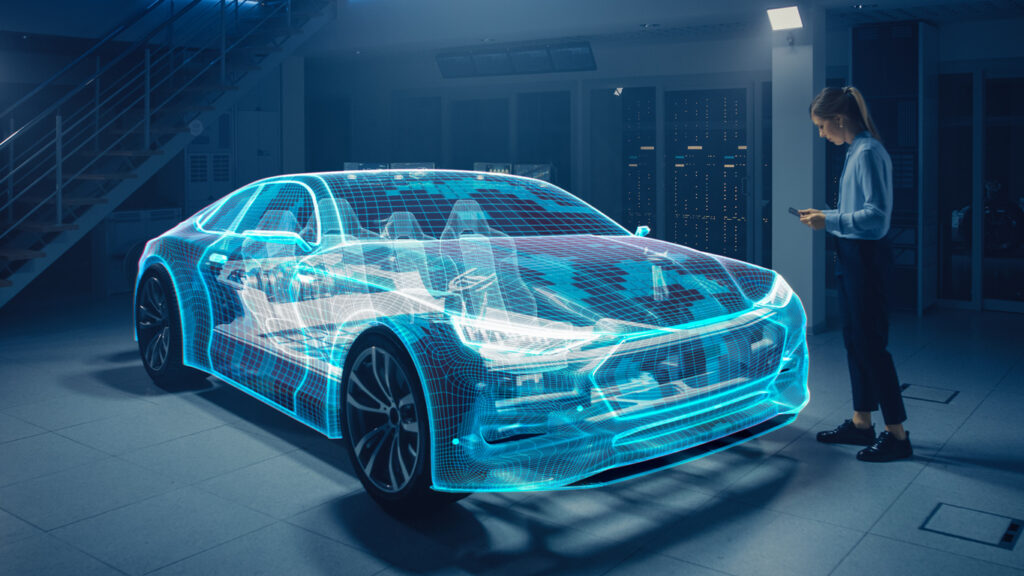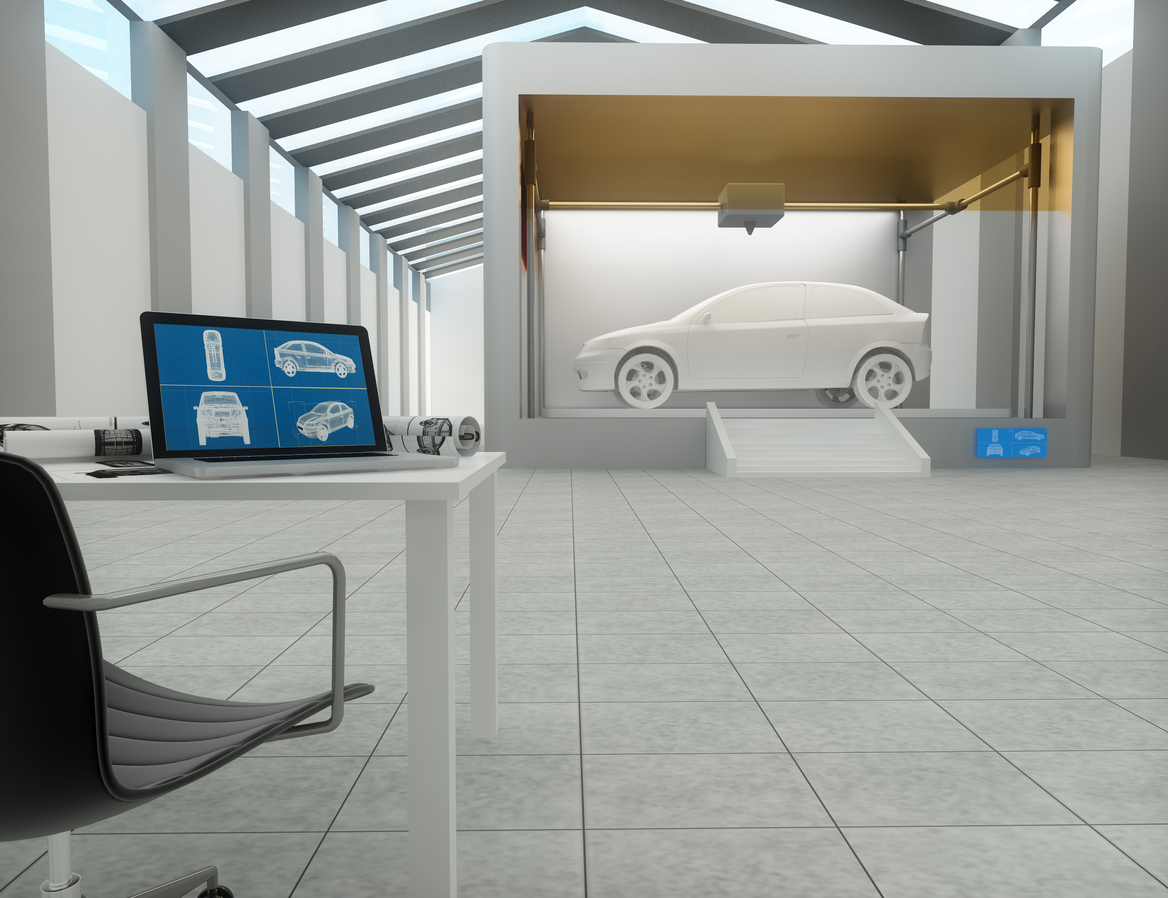The automotive industry stands on the brink of a revolutionary transformation, fueled by the convergence of advanced technologies and innovative manufacturing techniques.
We have already mentioned and focused on 3D printing in other articles, among others looking closer at its role in components design, industrial applications and medical appliances. Today, we will uncover the immense potential of 3D printing in urban transportation and witness the birth of a new era in automotive manufacturing.
This technology has revolutionised traditional manufacturing processes by enabling the creation of complex and customised parts through layer-by-layer construction. Now it is becoming more popular in the automotive industry and we are going to explore how that changes the way of making and maintaining vehicles.
3D Printing in Transportation
3D printing is not a new technology, it existed for over 40 years before it became popular in the electrical and electronics design system as an easy-to-use additive manufacturing technique. Today additive manufacturing is used in many more and different sectors than was formerly. We have 3D printed buildings, medical devices and implants, wearables and consumer goods. And it is also being used in the automotive industry.
Hence 3D printing, as a technology that enables the design and manufacture of complex components and parts, has emerged as a powerful force that promises to reshape urban transportation as we know it. With its ability to create complex and customised parts, 3D printing is redefining traditional production methods and unlocking a world of possibilities for the transportation sector. With benefits, such as reduced costs, improved design flexibility, faster prototyping, lightweight components, enhanced fuel efficiency, and increased sustainability through material optimisation, as well as waste reduction, many automotive companies are investing in this technology.
3D printed cars – prototyping and production
In the realm of urban transportation, 3D printing revolutionises prototyping by enabling cost-effective iterations with greater freedom and accuracy. Utilising 3D modelling software provides enhanced visualisation and efficient project modifications within a single platform.

This method facilitates both design and mechanical aspects, as advancements in 3D printing technology now allow for the use of various materials, including metals. Metal 3D printing opens up new possibilities for diverse projects. Furthermore, different 3D printing materials can be tailored to match the specific requirements of your projects, as each material possesses unique properties.
3D printing is a highly efficient manufacturing method that offers improved quality control and reduced material waste. With 3D printing, you only use the exact amount of material needed for production, minimising waste.
Examples of 3D printed means of transportation
3D printed vehicles do exist, and several brands have been involved in their design and production. We highlighted 3D printed vehicles, as well as some brands that design 3D printed components for other means of transport.
Divergent 3D Czinger
Over the past eight years, Divergent has successfully refined its DAPS (Divergent Additive Production System) into a comprehensive and modular car-building platform. This software-hardware solution serves as a viable alternative to conventional automotive production processes, positioning the company as a Tier 1 automotive supplier. Divergent now supplies chassis and suspension systems to major original equipment manufacturers (OEMs).
With the integration of 3D printing technology into DAPS, the platform gains exceptional flexibility to manufacture vehicles with diverse specifications on the same system. The use of additive manufacturing enables rapid iteration, empowering the system to computationally engineer parts in real-time. This capability eliminates the need for manual configuration, as parts can be produced and assembled directly from the digital design.
Olli, a 3D printed vehicle
Local Motors was (shutdown in January 2022) a pioneering company known for its development of 3D printed cars. After 15 years of operation, they produced an electric autonomous shuttle a few years ago. “Olli”, and its upgraded version “Olli 2.0” are both 3D printed self-driving vehicles. Olli represents a significant step forward in autonomous and sustainable transportation solutions as it has a futuristic design and utilises sensor technology as well as other technologies. At the same time, it can accommodate 12 passengers.
Local Motors also introduced “Strati” in 2014 which is the world’s first 3D printed electric car. To find out more about this technology, the brand shared a video that describes adaptation of the design to the 3D printed car prototype.
Airbus 3D printed aircraft components
Airbus is a leading aerospace manufacturer. We mentioned Airbus in our previous articles, among others as a designer of advanced eVTOL in the future of flying vehicles. Today, we would like to highlight its uses of 3D printing technology for various aircraft components. They have successfully printed complex parts, such as cabin brackets and air ducts, reducing weight and enhancing overall efficiency.
Sculpteo 3D printed bike
Bicycles are undoubtedly one of the most widely used modes of transportation worldwide. Therefore, Sculpteo decided to explore the feasibility of creating a bike using digital manufacturing techniques. And indeed, they did! They successfully crafted a bike using a combination of laser cutting and 3D printing, utilising Sculpteo’s advanced 3D printing service and high-quality materials.
The result is a fully functional bike that demonstrated its capabilities by embarking on a 1000 km journey from Las Vegas to San Francisco. This remarkable feat showcases the power of digital manufacturing in creating efficient and durable mobility solutions.
The process of a 3D printed car
As you can see, certain automotive companies have already designed 3D printed cars. If you are an engineer working in transport, have a look at these eight steps of designing a 3D printed car. Some of them might include additional steps and be done in a slightly different order. This is just a simple explanation of the process:
- Design and conceptualisation
Nothing starts without a plan! The process of designing the 3D printed car begins with the conceptualisation and design. This involves creating a detailed digital model using specialised 3D modelling software. Designers and engineers work together to determine the car’s aesthetics, functionality, and desired performance characteristics.
- Iterative design and optimisation
Multiple iterations of the design are typically created and analysed to optimise various aspects of the car, including aerodynamics, weight distribution, and structural integrity. Computer simulations and virtual testing are often performed to assess performance and make necessary adjustments.
- Material selection
This is one of the key aspects, as the materials factor decides how much the vehicle weighs, what its durability is, thermal properties, etc. The most common materials used in 3D printed cars include various types of thermoplastics, carbon fiber composites, and metal alloys.
- 3D printing of components
Finally, after the design finalisation, there is time for 3D printing of the components. Different additive manufacturing techniques may be employed depending on the materials and complexity of the components. These techniques include fused deposition modelling (FDM), selective laser sintering (SLS), stereolithography (SLA), or direct metal laser sintering (DMLS). Find out more about the types here.

- Assembly and integration
After the individual components are 3D printed, they are carefully inspected, post-processed, and prepared for assembly. The various parts, including the chassis, body panels, interior components, and functional elements, are then assembled to create the complete car.
- Testing and validation
After the car assembly, it undergoes rigorous testing and validation to ensure it meets safety standards and performance criteria. This includes conducting structural integrity tests, aerodynamic assessments, and functional testing of systems such as brakes, suspension, and electrical components.
- Refinement and finalisation
The feedback from testing is used to refine and optimise the car’s design and performance further. Adjustments may be made to improve aspects such as weight distribution, handling, and overall efficiency. Changes of the design and manufacturing process may be repeated to achieve the desired results.
- Production and scaling
At last, once the prototype is successfully validated and refined, the production process can be scaled up for mass manufacturing of 3D printed cars. This may involve optimising the production line, streamlining workflows, and ensuring consistent quality control measures.
3D printing future and different means of transport
3D printing is common in many different fields. In the automotive sector, it is transforming not only cars but other means of transport. 3D printing technology is being leveraged by various companies to produce innovative vehicles and components. While the technology is still evolving, the above mentioned initiatives highlight the potential of 3D printing in transforming the transportation industry, enabling customisation, lightweighting, and sustainable manufacturing practices, all of which contribute to a new future of transportation and the development of innovative means designed with the aid of 3D printers.











